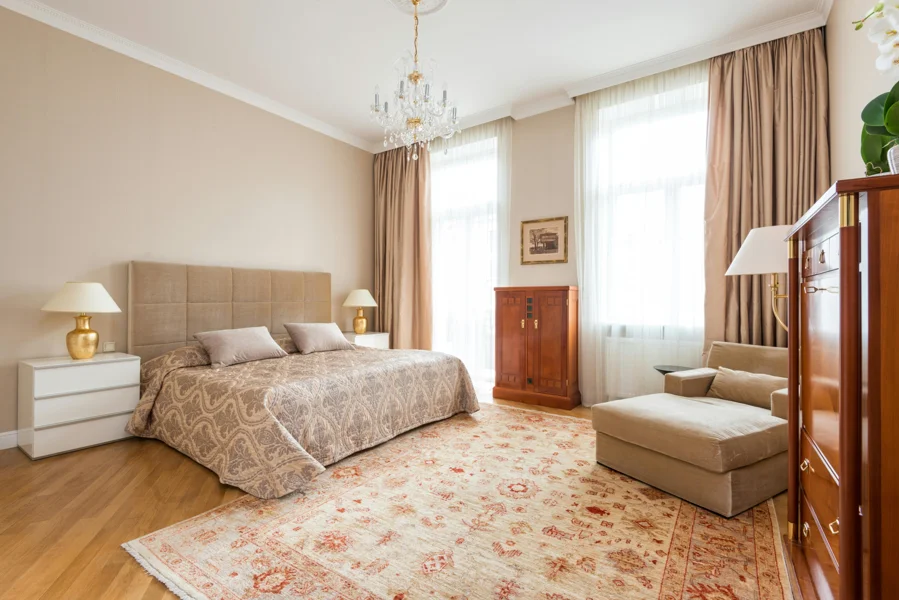How to Choose the Right Carpet for Your Home
Choosing a carpet involves more than picking a color you like. It's a decision that affects comfort, style, durability, and maintenance in your space for years to come. Whether you're renovating a single room or an entire home, considering these important factors will help you make an informed and lasting choice:
- Understand the Room's Usage and Traffic Level
- Match Color and Style to the Space
- Choose the Right Fiber Type
- Stain Resistance and Ease of Maintenance
- Evaluate the Carpet's Construction
- Don't Overlook Padding and Underlay
- Consider Your Budget Holistically
- Account for Moisture and Environmental Conditions
- Think About Allergies and Sensitivities
- Look for Warranty and Brand Reliability
1. Understand the Room's Usage and Traffic Level
Before selecting a carpet, it's essential to evaluate how the room is used and the amount of foot traffic it receives. High-traffic areas like hallways, staircases, and family rooms require more durable carpets, such as low-pile nylon or looped Berber styles, which resist matting and wear. In contrast, low-traffic areas like bedrooms or formal sitting rooms can accommodate softer, plush carpets such as polyester or wool blends that prioritize comfort and luxury over durability. Tailoring your carpet choice to how the space is lived in helps ensure it lasts longer and continues to look great over time.
2. Match Color and Style to the Space
Color and style play a major role in the overall impact a carpet has on a room. Lighter colors can make a space feel larger and more open, but they may also show dirt and stains more easily. Darker shades hide blemishes and add coziness. Style choices-such as cut pile for a softer appearance, or loop pile for a more textured, modern look-can also set the tone for the room. Coordinating your carpet with your furniture, wall colors, and lighting can help bring the entire design together harmoniously.
3. Choose the Right Fiber Type
Carpet fibers determine how a carpet performs and how easy it is to maintain. Nylon is a top performer for durability and stain resistance, ideal for busy households with kids or pets. Polyester is soft and budget-friendly, but may flatten over time. Triexta offers a balance between softness and stain resistance and is often made from renewable materials. Wool provides natural luxury but comes at a premium and is best in dry areas. Understanding the strengths and limitations of each fiber helps you choose one that meets your practical needs and personal preferences.
4. Stain Resistance and Ease of Maintenance
For many homeowners, especially those with children or pets, stain resistance is a top priority. Some carpets come with built-in stain protection, while others use solution-dyed fibers that resist fading and staining throughout the life of the carpet. Maintenance needs also vary by fiber and construction; for instance, low-pile carpets are easier to vacuum than shag or plush varieties. Consider how much time you're willing to spend on upkeep when choosing a carpet, and opt for one that aligns with your lifestyle.
5. Evaluate the Carpet's Construction
Carpet construction affects both the look and performance of the flooring. Cut pile carpets like plush and frieze offer a smooth, soft feel underfoot and a more formal look, while loop pile styles like Berber provide durability and hide wear better. A combination of cut and loop piles can offer texture and pattern that help conceal dirt and add visual interest. Knowing how each construction performs can help you select a carpet that suits the purpose and mood of the space.
6. Don't Overlook Padding and Underlay
The underlay beneath your carpet is just as important as the carpet itself. It provides cushioning for comfort, acts as a sound barrier, and can improve thermal insulation. It also helps extend the life of your carpet by absorbing the impact of foot traffic. The ideal padding depends on the carpet type and the room's purpose; denser pads are better for high-traffic areas, while softer ones enhance comfort in bedrooms. Always factor the underlay into your budget and installation plan.
7. Consider Your Budget Holistically
When planning your carpet investment, consider not just the price per square foot but the full scope of costs. This includes underlayment, installation, floor preparation, and potential future maintenance. Premium fibers like wool may have a higher upfront cost but last longer, while budget options may need replacement sooner. Evaluate your long-term expectations and balance quality with affordability to make the most cost-effective decision.
8. Account for Moisture and Environmental Conditions
Some rooms, like basements or entryways, may be more exposed to moisture. In these cases, synthetic fibers like olefin or solution-dyed polyester are better suited as they resist mildew and moisture damage. Natural fibers like wool, while luxurious, can absorb moisture and are not ideal for damp environments. Climate and ventilation also play a role-high-humidity areas benefit from breathable, mildew-resistant materials. Choosing the right carpet for the environment ensures better durability and fewer issues over time.
9. Think About Allergies and Sensitivities
For allergy-prone households, carpet can be both a benefit and a risk. Low-pile carpets trap fewer allergens than high-pile options and are easier to clean. Materials like wool are naturally hypoallergenic, but synthetic carpets made with low-VOC (volatile organic compounds) components are often better for sensitive environments. Some carpets are also treated to resist mold, mildew, and dust mites. Understanding your household's sensitivities can guide you to healthier flooring choices.
10. Look for Warranty and Brand Reliability
Carpet is a long-term investment, and choosing a reputable brand with strong warranty coverage can provide peace of mind. Look for warranties that cover stain resistance, wear, and texture retention. Brands like Shaw, Mohawk, DreamWeaver, and Anderson Tuftex are known for consistent quality and customer support. Review the fine print and understand what voids a warranty-like improper installation or lack of padding-before making your final choice.
